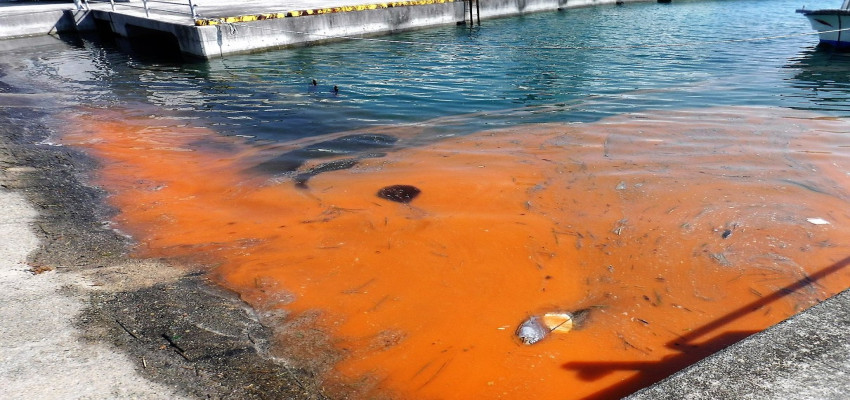
The coast of the US state Florida has been hit by the Red Tide, a phenomenon often seen in the seas The phenonmennon has littered the Florida with dead fish and burning the throats of those going to the beach.
The phenomenon, caused by toxic algae that kills sea life paralyzing the central nervous system, has occurred since the 1800s in the Gulf of Mexico. Red tide is a natural occurrence every year in the Gulf of Mexico.
The "red tide" is a toxic microscopic alga, Karenia brevis, which produce brevetoxins that can kill aquatic life. Brevetoxins are of red colour.
The red tide also affects people, causing skin irritations and respiratory problems.
The red tide is called by the scientists "harmful alga bloom".
What causes the red tide?
Red tide is caused by a toxic algae species known as Karenia brevis. It occurs when the algae multiply in large numbers and form blooms, resulting in the water turning reddish-brown. The algae produce brevetoxins, which are fatal for marine life and capable of affecting people, causing skin irritations and respiratory problems.
It has the potential of blocking out the sunlight and depleting the water’s oxygen levels.

